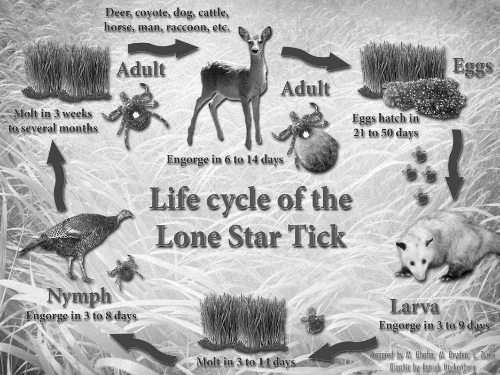Ticks

Ticks serve as a food source for birds and other organisms in the environment, but that doesn’t mean we have to like them. Ticks typically reside in grassy areas near the soil and latch onto a host as they walk by. The males will feed sparingly and don’t grow in size normally, while the females will engorge. The females need a blood meal to produce eggs, so they are more likely to attach to humans and pets. Ticks thrive in cool, wet weather, so it is expected that with warmer and drier weather, we may see a decrease in the tick population. To keep ticks from latching onto you, avoid unmanaged areas in the landscape or on walks, use repellants that contain 30% DEET, and tuck your jeans into white socks so ticks are easier to see. When you get home, remove clothes immediately and check for ticks. You can also put your clothes in the dryer on the highest setting to kill any ticks hiding or attached. The lone star tick, the American dog tick, and the deer tick are the most commonly infesting people and dogs in the state. These three ticks are known as “three host ticks” as they will feed on three different hosts depending on where they are in their life cycle, which can last for up to two years. While ticks are an essential food source for other animals, they carry several diseases and can cause severe allergic reactions. If possible, avoid getting bitten by ticks.
the dryer on the highest setting to kill any ticks hiding or attached. The lone star tick, the American dog tick, and the deer tick are the most commonly infesting people and dogs in the state. These three ticks are known as “three host ticks” as they will feed on three different hosts depending on where they are in their life cycle, which can last for up to two years. While ticks are an essential food source for other animals, they carry several diseases and can cause severe allergic reactions. If possible, avoid getting bitten by ticks.

Have questions? Contact our office where our Horticulture Extension Agent will assist you with questions.
Phone: (316) 321-9660
Email: callae@ksu.edu